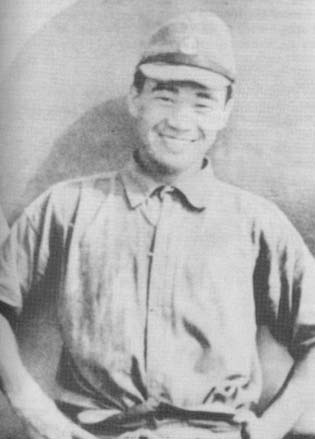Saburo Sakai
 Saburo Sakai, a fighter pilot serving
with the Japanese Naval Aviation Service from 1934 to 1945, was the top scoring ace in the
Pacific theater of World War 2, with a final kill tally of 64 Chinese and other Allied
aircraft destroyed. His battle mount of choice through most of the Pacific War was the
A6M2 "Zero" fighter, arguably the most nimble dogfight machine to see action on
either side of the conflict.
Saburo Sakai, a fighter pilot serving
with the Japanese Naval Aviation Service from 1934 to 1945, was the top scoring ace in the
Pacific theater of World War 2, with a final kill tally of 64 Chinese and other Allied
aircraft destroyed. His battle mount of choice through most of the Pacific War was the
A6M2 "Zero" fighter, arguably the most nimble dogfight machine to see action on
either side of the conflict.
This charming little anecdote from Sakai's career came to light
in the Japanese press several years ago. I have since tried to relocate some of the
articles related to it, but have had no luck. I do, however, remember most of the details,
so I will try to relate them here as best as memory serves:
Several years ago, a former Dutch military nurse -- now a retired woman in her
70's -- contacted the Japanese Red Cross (or some similar charitable organization),
attempting to locate a Japanese fighter pilot who spared her life somewhere over Java (New
Guinea?) one day in 1942. According to her account of the event, she was flying in a Dutch
military DC-3 (C-47) air ambulance at low altitude over dense jungle. On board were
wounded soldiers and several children who were being evacuated from a combat area.
Suddenly, a Japanese "Zero" fighter appeared alongside the plane. The nurse
could see the Japanese pilot's facial features clearly. She and some of the children (!)
stood by the tiny cabin and cockpit windows of the DC-3 and began frantically trying to
wave him off. It is not hard to imagination the panic they must have experienced while
pantomiming as if their lives depended on it (and they DID!).
After a few eternal moments of what must have been sheer terror for the
desperately pantomiming passengers, the "Zero" gave a quick, acknowledging wing
wobble before peeling off and disappearing from sight. The cockpit and cabin of the DC-3
were filled with cheers and sobs of relief.
For fifty-odd years, the Dutch nurse had wanted to meet with the Japanese pilot
who spared her life, as well as the lives of the wounded soldiers and children that day.
With a stroke of sheer luck, the Japanese Red Cross was able to locate the pilot of the
Zero plane, and it was none other than Saburo Sakai, who had been flying a sortie combat
air patrol on the day in question. When asked if he remembered the incident, Sakai replied
that he did, and that he had thought about downing the plane for a brief moment, as higher
command had instructed fighter patrols to down any and all enemy aircraft encountered,
armed or not. When he saw the waving hands and horror-stricken faces in the windows of the
DC-3, however, he was moved to mercy, thinking that anyone who wanted to live that badly
deserved to survive. Apparently, he did not experience similarly tender feelings for many
an Allied military aviator who was to stray into his gunsights in the subsequent three
years of aerial combat, but on that day over the Javan jungles, he showed mercy. It is an
anecdote of a type that is sadly rare in the annals of Japanese WW2 military history, but
one that, nonetheless, shows that even the fiercest of warriors can be capable of human
compassion.
Soon after the war, appalled not only with the loss of life that his countrymen
had suffered, but seeking atonement for the loss of life he had brought about peering
through his own gunsights and squeezing a trigger, Sakai became a lay Buddhist acolyte, a
devotion which he continues to this day. According to Sakai, he has not killed any
creature, "not even a mosquito," since the last time he stepped from the cockpit
of his A6M5 "Zero" one hot August day in 1945.

A6M2 "Zero" of Saburo Sakai, Tainan Kokutai, Bali Island,
1942.
Click on image for information on this aircraft type
Hall of Fame WWII | Aircraft Selection | Feedback
 Saburo Sakai, a fighter pilot serving
with the Japanese Naval Aviation Service from 1934 to 1945, was the top scoring ace in the
Pacific theater of World War 2, with a final kill tally of 64 Chinese and other Allied
aircraft destroyed. His battle mount of choice through most of the Pacific War was the
A6M2 "Zero" fighter, arguably the most nimble dogfight machine to see action on
either side of the conflict.
Saburo Sakai, a fighter pilot serving
with the Japanese Naval Aviation Service from 1934 to 1945, was the top scoring ace in the
Pacific theater of World War 2, with a final kill tally of 64 Chinese and other Allied
aircraft destroyed. His battle mount of choice through most of the Pacific War was the
A6M2 "Zero" fighter, arguably the most nimble dogfight machine to see action on
either side of the conflict. 